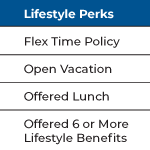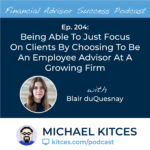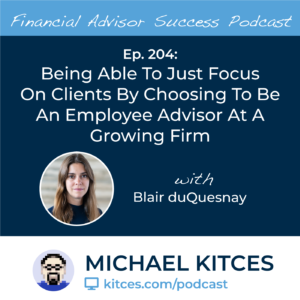The financial advice business is a service business, and a service business is a people business. Which means the ability to attract and retain people to work in the business, and keep them happy and engaged with that work becomes increasingly essential as an advisory business grows and scales. And keeping employees happy is a function of not only having meaningful work to do, but also compensating them appropriately for that work. In recent years, this has led to an ever-growing number of “perks” that firms offer employees to keep them happy, from retirement benefits to health insurance, to education reimbursement to student loan support, and gym memberships, and employer-provided meals. But in the end, employers can’t just pile on a never-ending stream of employee benefits and perks in the hopes that it will help employees to retain; at some point, the question becomes: what are the best “perks” and employee benefits that really, actually help to retain employees?
In this guest post, Angie Herbers – Chief Executive and Senior Consultant at Herbers & Company, an independent management and growth consultancy for financial advisory firms – discusses her four principles that she has determined are most effective at supporting employee happiness. Known as the “P4 Principles”, they include a combination of Preparation (helping all team members achieve success), Pay (designing satisfying compensation and incentive packages for employees), Perks (offering lifestyle benefits that motivate employees and help them balance their work and personal life), and Productivity (providing the tech tools that allow employees to do their work in the first place). Importantly, though, “P4 Firms” that implement all four P4 principles successfully have shown that offering the right Perks to employees is the most impactful of the four P4 Principles in achieving lower turnover, higher growth, and more successful employees.
Research conducted by Herbers & Co revealed several perks offered by companies that were most effective in increasing employee happiness. Two perks, above all others, that are important for all financial advisory firms to offer to their employees are health insurance and retirement plans (even if the company is unable to contribute on behalf of their employees). Not only are these two perks necessary for financial advisory firms to attract (and retain) top talent, but they are also important to offer employees access to these benefits simply for company morale, especially when the firm teaches its clients that purchasing health insurance and saving for retirement are essential practices for a healthy financial future (which can quickly make employees wonder why they’re not receiving those benefits, too!).
In addition to the essential employee perks of health insurance and access to an employer retirement plan, financial advisory firms can offer a menu of additional optional perks to motivate their employees and help them better manage (and enjoy) their professional and personal lives. In fact, Herbers' research indicates that while there is a wide range of potential perks and benefits that firms might consider offering, including flex time, unrestricted vacation, bereavement time off, family leave, time off for volunteer work, paying for continuing education, time off for continuing or further non-work-related education, group discounts, and sabbatical time off, companies need not offer all (eleven) types of perks; instead, offering at least six of these options (chosen from any of the top eleven) was sufficient to maximize employee happiness (by allowing enough options that all employees could appreciate and benefit from at least some of the available perks).
Furthermore, employees who are given a range of these perks (and the autonomy to choose amongst them) tend to feel that their employer trusts them to balance their lives with doing a good job which further motivates them to manage themselves (and each other). In fact, despite fears from many employers that too many – or too flexible – perks may lead to abuse, in practice, firms with strong positive work cultures typically find that employees still feel accountable to each other… and consequently generally do not abuse the privileges the perks afford (e.g., if offered unlimited vacation time, P4 Firm employees still end out taking only what they really need). In fact, P4 Firm employees were found to take less vacation (14.5 days per year) when compared to non-P4 Firm employees (who took an average of 19 days per year), despite having more flexibility and often “unlimited” vacation access!
Ultimately, the key point is that financial advisory firms that focus on a P4 culture by implementing good Preparation, Pay, Perks, and Productivity practices, with an emphasis on providing the right Perks for their employees to support their happiness, will generally have great employees with high morale and the motivation to manage the company responsibly and effectively, which can help the company grow into a truly great business!







 Welcome back to the 204th episode of Financial Advisor Success Podcast!
Welcome back to the 204th episode of Financial Advisor Success Podcast!

